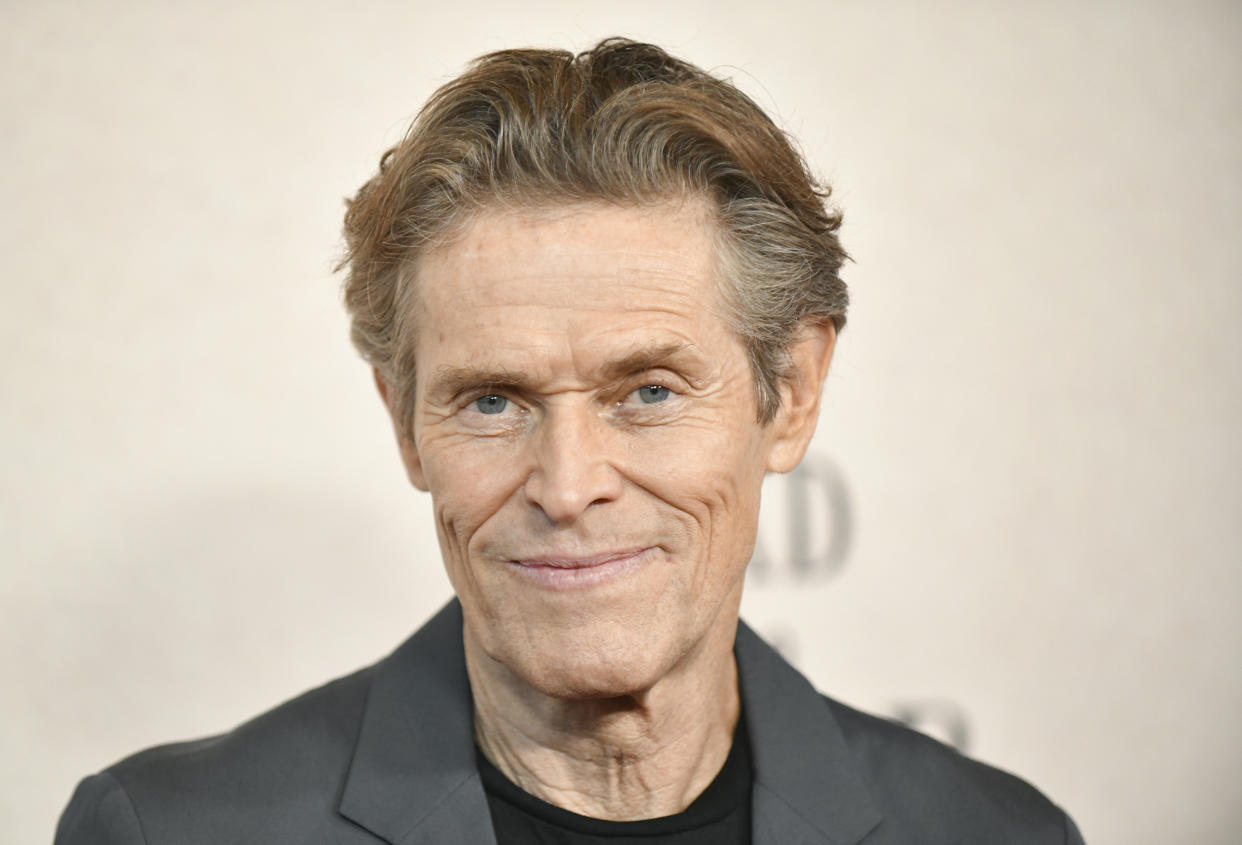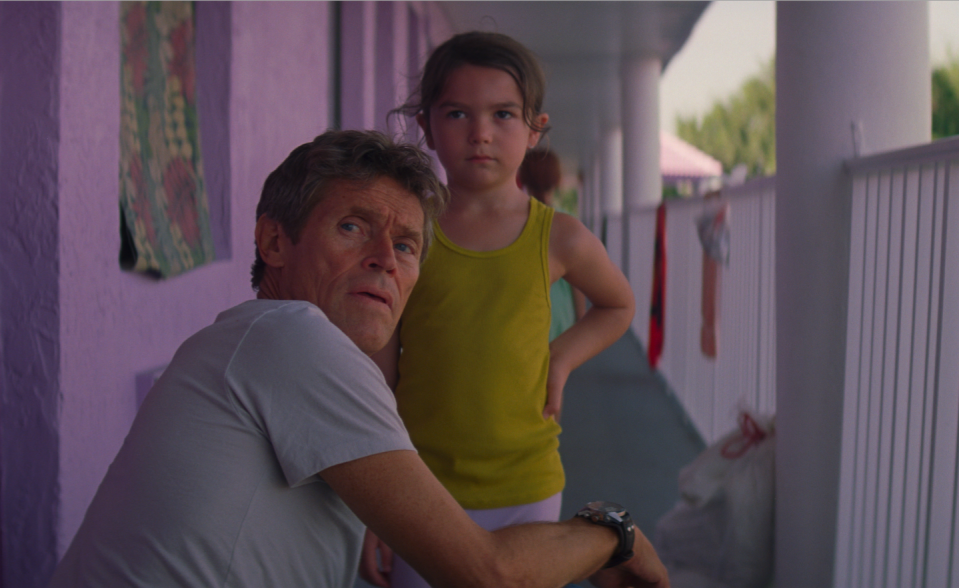The Wisdom of Willem Dafoe: The Actor Reveals the Rules That Govern His Boundary-Pushing Movie Career

With his wry grin and darting eyes, Willem Dafoe is often the most distinctive face in any movie he appears in. With “Inside,” however, he’s pretty much the only one. His character, a desperate art thief at the center of director Vasilis Katsoupis’ first feature, finds himself trapped in a swanky New York City penthouse in the midst of heist. With no discernible way out, he becomes a kind of island castaway as the walls — and the art work containing them — slowly close in on him. It’s a vintage Dafoe performance, loaded with the eerie subjectivity of a man who may or may not be losing his mind.
It’s also one of the best showcases for Dafoe’s craft in some time, since he’s in every scene as he conveys the complex psychology of a criminal forced to confront an unexpected destiny. However, you’d be hard-pressed to find a movie where Dafoe doesn’t bring everything he’s got.
More from IndieWire
He still pops up in blockbusters like “Spider-Man: No Way Home” and “Aquaman,” but more often can be found delivering more ambitious performances in auteur visions from Robert Eggers (“The Lighthouse,” “The Northman,” and the upcoming “Nosferatu”) and Wes Anderson (“The Life Aquatic With Steve Zissou,” “The French Dispatch,” and this year’s “Asteroid City”).
He’s also a four-time Oscar nominee in projects that range from “Platoon” to “The Florida Project,” played Jesus in “The Last Temptation of Christ,” and squeezes in countless collaborations with his close friend Abel Ferrara. All in all, Dafoe stands out as one of the hardest-working actors today who never seems to phone it in.
No matter what kind of project Dafoe takes on, his utter commitment to the role stands out. That ability, honed from his early days in the experimental theater company the Wooster Group, has helped him maintain an authentic relationship to his creativity even as he profile grew.
Here, in his own words, he shares some of the key factors that inform his approach today.
Forget the backstory and live in the moment.
During all my years at the Wooster Group, the one thing that was instilled in me was that I respond to doing things — task-oriented stuff. You do things: Move the chair and so on. In the doing of things, you let things happen to you. With each action, it gets compounded, and as it gets pushed into motion, your mind is affected. But you really engage the body first. This was the perfect opportunity to do that. There’s something concrete, factual, practical about what you’re doing. After the choices you make, things open up and a narrative starts to form along with a character. You’re not conscious of pushing that. It’s something that happens as you deal with the situation.
In this movie, it wasn’t important who this character was before the film starts. You just know he’s an art thief, he enters the building, and he gets stuck there. He’s revealed through the doing — as all characters are — through the things that he chooses to do or not do.
Do your own stunts, big and small.
I always do my own stunts. Usually there’s a tendency to have the stuntmen do them as well. They tend to do it both ways so they have options. However, if you can do it, they let you do it. I’m a beast. I’m used to doing physical stuff. There’s no going back. You go forward, forward, forward. That has a beautiful effect. You concentrate on what you’re doing. You’re not thinking outside of where you are. It’s important when entering a character to be present with these things.
Look for the deeper meaning of the story around you.

Wolfgang Ennenbach / Focus Featu
In this movie, the meaning of the paintings change from the beginning, middle, and end. Nothing has changed about the paintings, but the situation has changed. The thing itself does not have inherent qualities. When we’re forced not to take things at their superficial value, it opens up an understanding of how things are interconnected, where stuff fits in, and what defines them. When you’re in that kind of headspace, you can think much more wisely than when you’re just accepting borrowed concepts and values out of the hand that you’ve inherited.
Money matters, but only in the proper context.
Listen, money is a consideration, certainly, but it’s not why you do the work. The reason you consider it is that it often tells you what people’s intentions are and what they value. It’s a tip-off. When you work like I do, I’m going to be OK, but I’ve never been solely motivated by money. I’ve never taken a job only for that. It’s just a fact. It’s not because I’m this moral guy or have this purity. It just doesn’t make sense. Good work breeds good work and opportunities. You try to do the best work and sometimes the best-paying jobs aren’t the best work. Sometimes the poor-paying jobs are.
If you find success, don’t worry about which roles give you the most fame.
People tend to be set in their taste and what they’re most interested in. I run into people on the street that think I’ve only made “Spider-Man” and “Aquaman.” There are also people that only know me from smaller movies. It’s not my business; my business is to make the work. You hope there’s enough interest that you continue to do what you do. But the measure is kind of ridiculous. The measure is so you’re able to make more work.
When you make a film that you think is beautiful, of course you want to get it out there. But I wouldn’t even go so far as to say you’re proud of it because what you feel about a film doesn’t guarantee what someone else feels about it.
Worry about the project, not its commercial viability.

Courtesy of A24
If I’m working with a new filmmaker, the project has to have something else going on — the premise, how they approach me, a producer with excellent taste. In “Inside,” I liked that it called for a special kind of performance I hadn’t done before. I enjoy working in all kinds of situations. There are always new people coming up, but to what degree, I don’t know. I’m in it so I don’t have a wide view. It shifts around.
It’s no accident that there are interesting films sometimes coming from places that we’ve never seen films from before. My participation in some of those is limited very much by language and culture. How films get made, how they get distributed, what the economics of those things are — those are big questions, but I’ll shoot myself if I think about those things too much. Don’t worry. I won’t. I don’t have that kind of mind.
Hide behind the work.
I don’t judge my films or even other people’s films publicly. Let others figure this out for themselves. I watch films often because people present things to me. Sometimes I know their work. I watch a lot. I can talk about the making of something, but I’m loath to talk about my taste. I don’t want people to know what I think. It gets in the way if you know all about the likes and dislikes of someone. It colors how they see you. They get an image of you, it becomes less flexible when they watch you in a movie.
A Focus Features release, “Inside” is in theaters now.
Best of IndieWire
New Movies: Release Calendar for March 17, Plus Where to Watch the Latest Films
From 'Oppenheimer' to 'Dune: Part Two,' Here's Where to See Florence Pugh Next
From 'Nymphomaniac' to 'Little Ashes': Unsimulated Sex Scenes in 38 Films
Sign up for Indiewire's Newsletter. For the latest news, follow us on Facebook, Twitter, and Instagram.

 Yahoo News
Yahoo News 
